
At any time see the miniseries From the Earth to the Moon? Fantastic story about the Apollo moon missions. I’m pretty confident it was in one of all those episodes that I most bear in mind the impactful big difference concerning “unit tests” and “system assessments.”
Acquiring individuals on the moon necessary a substantial quantity of various ingredient systems, a lot of just about every breakthrough improvements on their have. But achievements depended on how nicely the overall technique labored. All these parts wanted to be connected and coordinated. This was real techniques integration, a long time right before we at any time confronted this kind of challenges in working day-to-working day advertising and marketing.
Spoiler warn: receiving the total intricate procedure to perform proper is really challenging.
Marketing and advertising may well not be rocket science, but as it has expanded by means of hundreds of digital apps, algorithms, brokers, pursuits, automations, analyses, and so on. — all transferring parts in our Large Ops natural environment — the challenge of programs integration in our self-discipline has developed exponentially.
Latest Stats on Tech Stack Development
Last month, composing about when martech stacks become way too advanced — an evaluation that is relative to your martech organizational maturity — I mangled tailored Occam’s Razor to state Martec’s Razor: other matters remaining equivalent, the most basic stack is greatest.
But to riff on Einstein far too, a stack really should be as simple as attainable but no more simple. Refusing to increase factors that are important to your company’s competitiveness isn’t a winning method. It would be like the Apollo missions ditching their assistance systems since they were being way too really hard to integrate. “Just kinda eyeball it, fellas. It is the large grey rock in the sky. You simply cannot skip it.”
The competitive push for digital abilities is why organizations preserve incorporating new SaaS apps to their stacks — even at the similar time that they are taking away other individuals that are redundant or underutilized.

A new 2023 Point out of SaaSOps report revealed by BetterCloud, a additional upmarket SaaS management system, presents us some updated data on the average sizing of tech stacks at mid-marketplace and business organizations.
The numbers, proven above, are extra modest — and I imagine much more rationalized — than I have viewed in identical reports in yrs past. Businesses have ~130 SaaS apps on common. In just BetterCloud’s longitudinal information established, they’re even now displaying calendar year-more than-calendar year progress from 2021. But my impact is that development is leveling off.
Nonetheless, ~130 SaaS applications isn’t precisely key “consolidation” the way some people today have been predicting it. These are abundant, heterogeneous stacks. And that fundamental construction does not appear to be modifying.
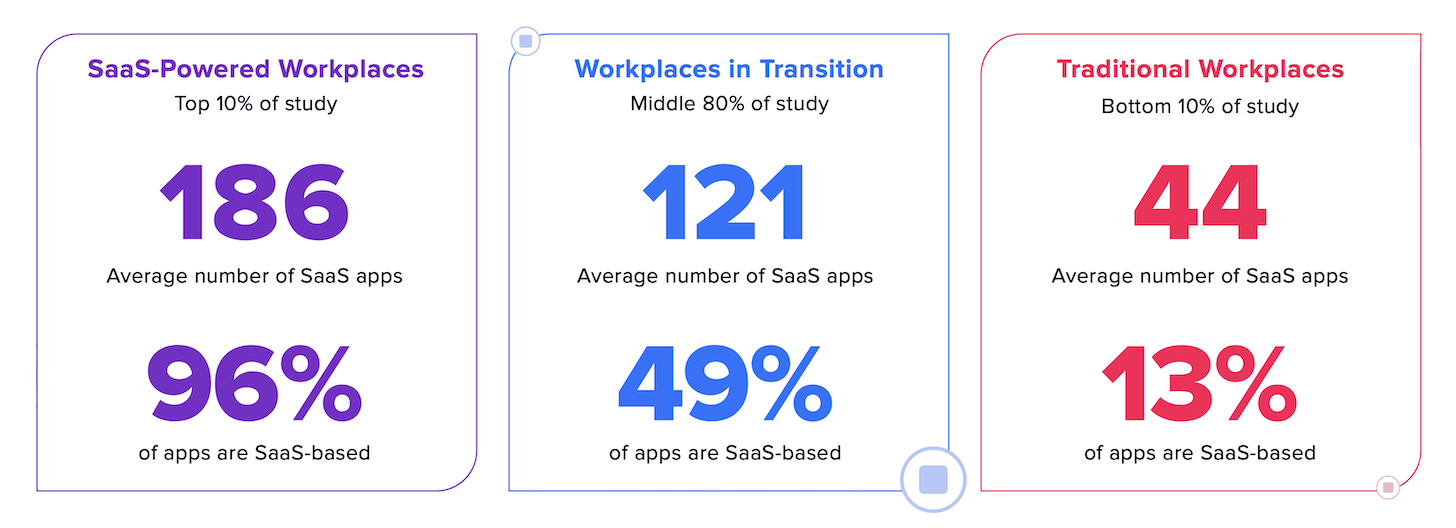
In truth, if you glimpse at companies’ tech stacks through the lens of their relative SaaS maturity — a diverse lower of the data from BetterCloud’s report — you will see that SaaS-powered workplaces, which have nearly all their apps in the cloud instead of on-prem, have much more like ~186 SaaS applications on normal.
If we make the tough approximation that this kind of SaaS-run workplaces are more together in their “digital transformation” than some others — I know, that is a debatable generalization — we ought to assume that firms who are further powering will capture up. And will possible undertake additional SaaS apps in the process.
Bringing “Shadow IT” into the Light
From a survey of 743 IT pros in the BetterCloud report, 58% of them be expecting It’s price range to develop in 2023. Where by are they setting up to commit? These are their top priorities with regard to SaaS administration:
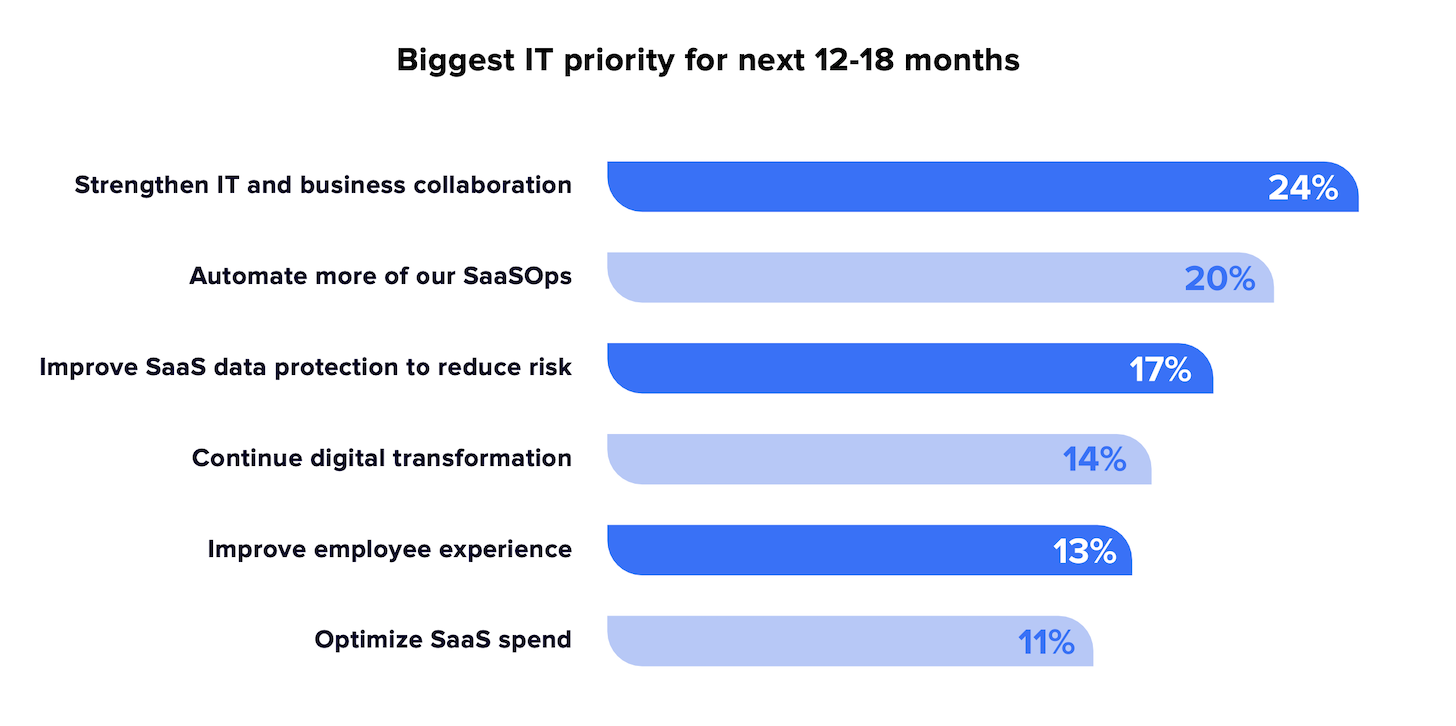
Optimizing SaaS devote — which is usually code for “consolidating apps” — is in the checklist. It is vital. But other priorities are considered additional vital. The top one particular: bolster IT and small business collaboration.
A massive component of that mission is enabling distinctive business enterprise teams to use the applications that they deem most powerful in their work. Not in insulated silos outdoors of It is purview — what has historically been identified as “shadow IT.” But with the appropriate amount of IT governance serving to to handle actual troubles and protection challenges with unmanaged (or undermanaged) apps.
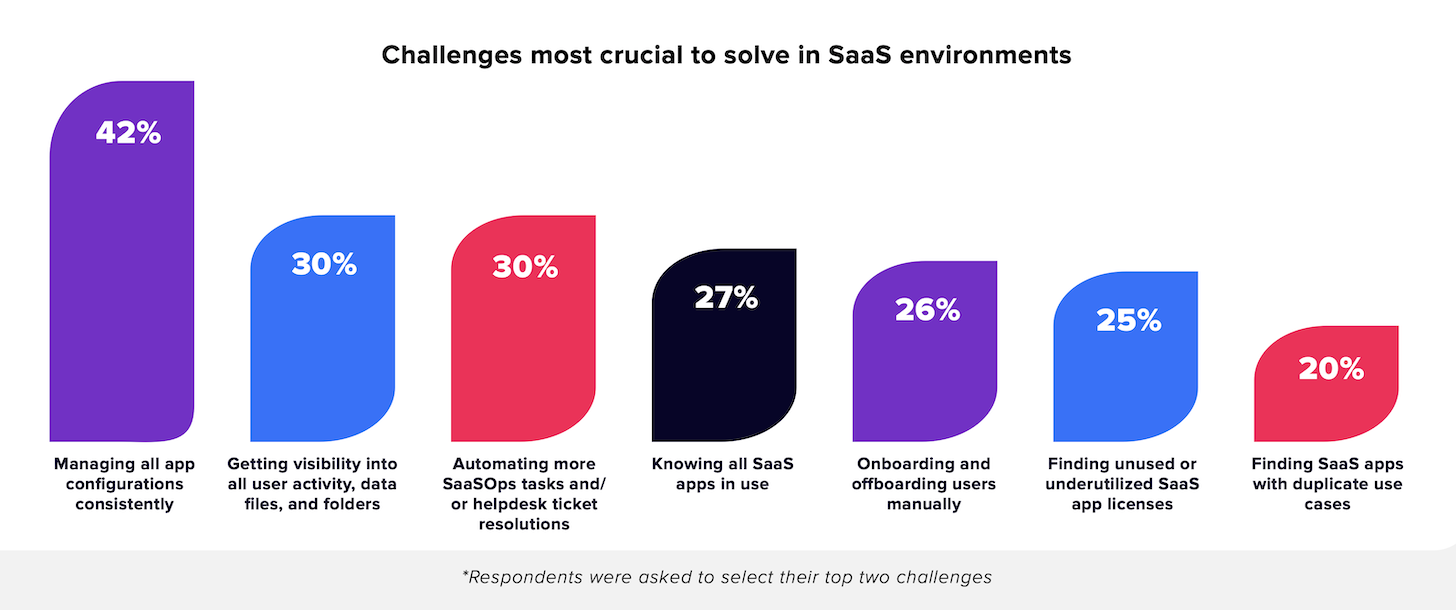
Even the most independent internet marketing ops/martech specialist will admit that resolving these troubles in a constant way across the enterprise is A Great Detail. Leaning into collaboration with IT on good “SaaSOps” administration can improve the life (and careers!) of marketing and advertising ops groups — without hindering the progress and evolution of new martech abilities.
Obtaining the martech stack related into the fabric of the rest of the company’s broader tech stack allows overcome those governance challenges. But it also opens the doorway to further collaboration concerning internet marketing and other groups in profits, purchaser accomplishment, products, operations, etc.
Orchestration > Integration > Consolidation
For quite a few a long time now, “integration” has been a sizzling-button issue in martech. MarTech.org’s Martech Alternative Survey posted back again in July demonstrates that greater integration was the 2nd most typical rationale (24%) people decided to swap out an present martech application. And when they picked the substitute application, integrations and open up APIs ended up an important variable for 54% of people buyers.
The State of Martech 2022/23 report just lately published by the Learning Knowledge Alliance (LXA) reinforces this actuality: inadequate know-how integration is even now the main barrier to advertising technology investment and use right now.
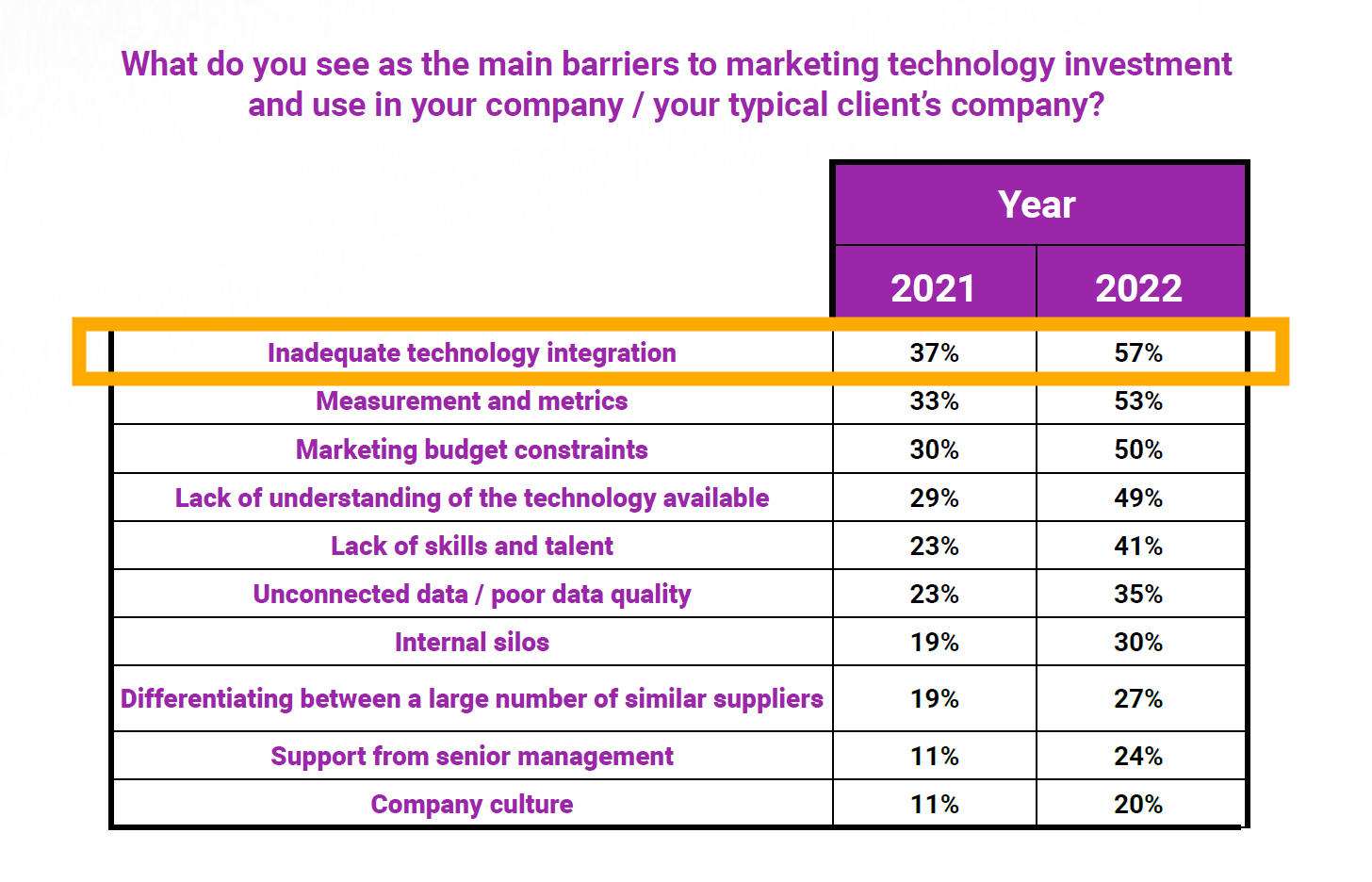
This persistent drive for better integration has become a powerful motivator in the martech market. It’s why the 2nd Age of Martech, which we’re now living in, is outlined about platform ecosystems.
But integrating your tech stack is only the first step.
To seriously unlock the electric power of your apps and platforms, you need to orchestrate company procedures throughout them. This calls for both equally (a) visibility into these apps and (b) the ability to automate throughout them — two of the focal points for SaaSOps.
Such cross-application automation could be executed by area-specific platforms, this sort of as CRMs at the heart of consumer-facing workflows. Or by company automation platforms that span the complete company. (I think of these as vertical aggregation and horizontal aggregation designs, respectively, in matrixed tech stacks.)
Electronic orchestration is defined by the capability to reliably run application-spanning and team-spanning automations. It is a better purchase effect over and above process-amount effectiveness of typical automation, opening the doorway to new system innovation. The difficult boundaries of intracompany silos start to turn into permeable and adaptable in interesting new approaches.
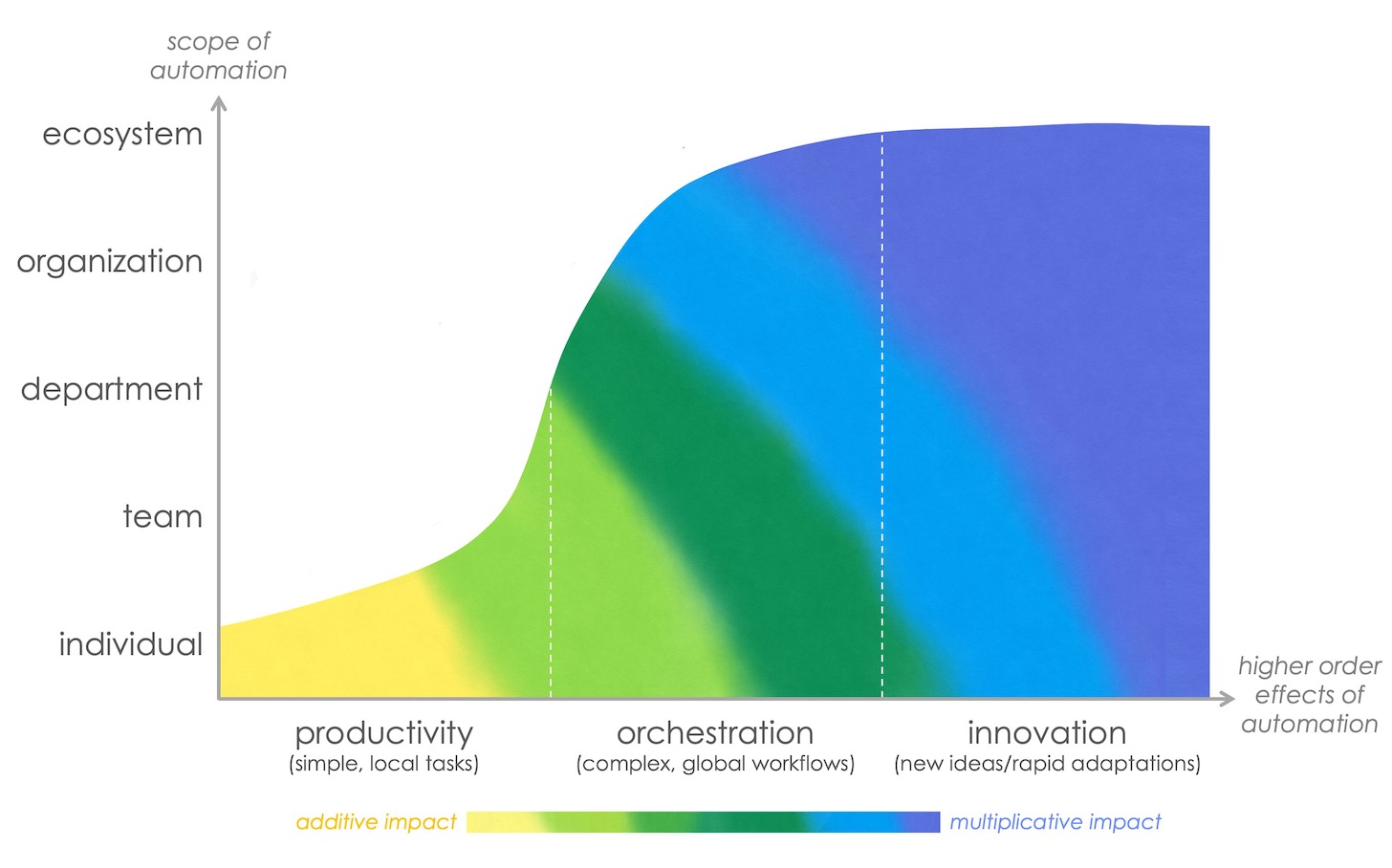
These types of coordinated execution isn’t minimal by the (virtual) partitions of your firm both. In the infinitely adjacent digital ether, we can now orchestrate routines with our second-get together partners much too. It’s why ecosystem tech is now a person of the most popular classes in martech. And it is why associate ops, the neglected ops, is quickly flourishing.
Which provides me to the issue of the graph at the major of this post.
A big explanation why sprawling tech stacks can be so irritating is for the reason that the expenditures of coordination throughout unintegrated and unorchestrated applications exceed the rewards those people specialised applications supply on their very own. Each and every application could be outstanding at what it does in isolation. But the total place of a digitally remodeled business enterprise is that our digital pursuits are not isolated, but related jointly.
Wrangling these interdependent connections advertisement hoc or manually swiftly will become a mess.
To make a huge stack helpful, you need the potential to orchestrate the program as a complete. It’s partially a specialized challenge, which is staying addressed by a broad subject of cloud-based automation and aggregation systems. But it’s also an organizational obstacle, which involves new wondering and cross-group collaboration.

Consolidation in your tech stack is great — as easy of a stack as attainable, but no less complicated. Integration throughout your tech stack is vital much too, as a important but not ample step toward orchestration. But orchestration is the rocket engine.
This is marketing’s “system test” on our journey from the earth to the moon.











